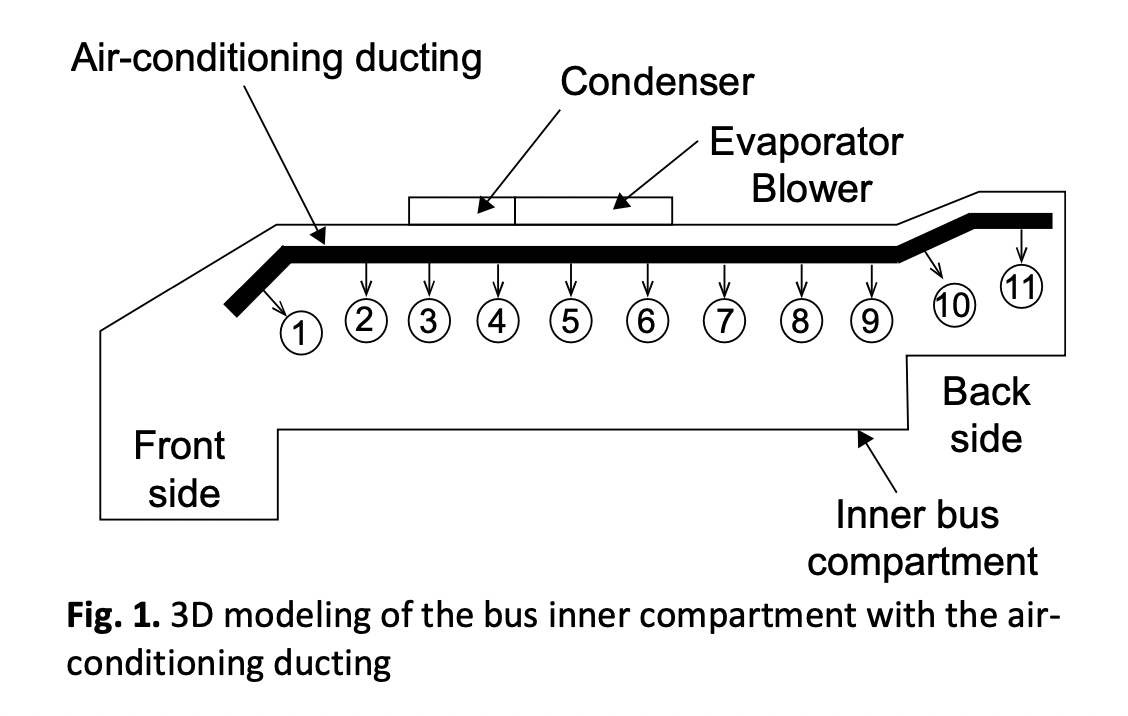Field Measurement of Air Velocity and Temperature Factors that Influence the Thermal Comfort in Shuttle Bus
DOI:
https://doi.org/10.37934/arfmts.101.2.164171Keywords:
Shuttle bus, temperature, velocity, thermal comfortAbstract
Good public transportation that can offer a pleasant peaceful and relaxing environment is necessary for improving people's interest in using it. Thermal comfort is determined in this study by measuring the air velocity and temperature of the air-conditioning from the outlet. Both data are taken using a digital anemometer and thermocouple with three replications for reproducibility. For data collection, a 10-row shuttle bus was held immobile for 30 minutes. According to the data, outlet 5 received the highest air velocity and the lowest temperature, at 9.12 ms-1 and 13.6 °C, respectively. It was also discovered that the design of the air-conditioning ducting impacts the reachability of cooled air to the farthest outlets, adversely affecting the target cool temperature and passenger comfortability. It is suggested that in order to promote the attractiveness of public transportation, the inner bus compartment and air-conditioning system in hot countries should prioritise thermal comfort.
Downloads
































